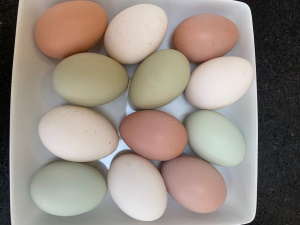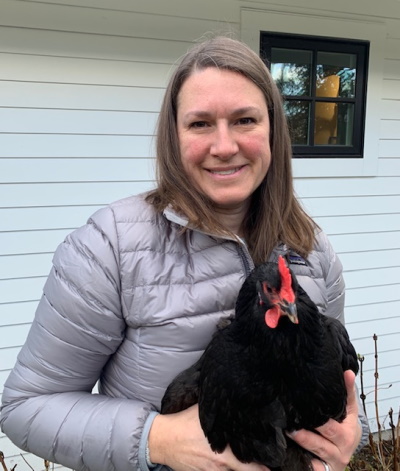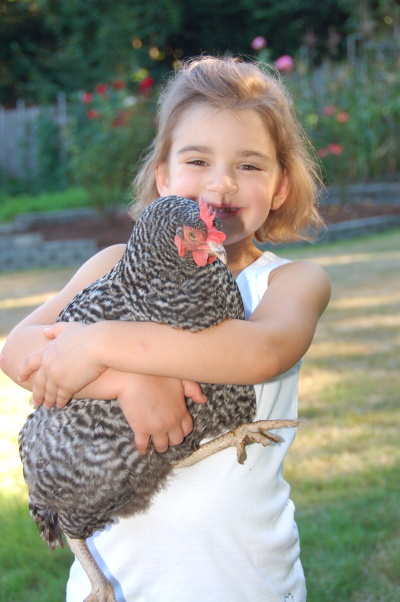Backyard chickens make me smile! Maybe it’s the farm girl in me, (as a crow flies, I live less than 3 miles from downtown Seattle), but seeing these bustling beauties peck around my yard just knocks the stress level down a few notches. It connects me to my roots and to my food- something I think we all crave, especially now. Chickens come in all kinds of breeds with all kinds of personalities, which makes this adventure fun and unique to every chicken owner! And one of the best parts? A healthy backyard chicken can lay in the range of 150-200+ eggs a year.


I have been keeping chickens for over 12 years now. My current flock consists of four ladies: Lola and Goldie are Easter Eggers that lay beautiful blue-green eggs and are a little bit too smart for their own good. Minnie, a Polish, is quirky but friendly and Mabel is a black Australorp – by far the most favorite chicken I have ever owned. She is friendly, calm and very personable. Other good breeds for the backyard are Buff Orpingtons, Wyandottes, Rhode Island Reds and any other breeds labeled as friendly, hardy, and good layers.
First make sure your city or town allows chickens (check local ordinances and do not get a rooster!). To start – some basic equipment and general knowhow can easily be acquired off the Internet or from a book. My favorite website is mypetchicken.com and the book currently on my desk is Your Farm in the City by Lisa Taylor. Current pandemic conditions offer online classes but in non-pandemic times, you can find beginner classes at Seattle Tilth or The Issaquah Grange(grangesupply.com) which has very good information on their website under the tab “grange guide”- backyard chickens. I would highly recommend taking a class in the late winter to prepare for starting your chickens in the Spring.

Doing well in confinement (a coop) is a must for backyard chickens. It provides them food, clean water and protection from predators. Coops can be purchased online, built or even found used on Craigslist. A hanging feeder and self-waterer are what I like best (see photo). Some scratch (for treats), grit and ground oyster shell for calcium are a must too. All of these, plus baby chicks, can be found at your local grange or feed store. Baby chicks are available March through early May. Chicks do require some special attention to get them to full size laying hens so make sure to attend that online class, do your research and purchase the needed supplies. Some places will sell pullets (young hens) if you want to skip the chick stage but is there anything cuter than a baby chick in the Springtime?!?!


The process of raising chicks to hens, understanding their needs and care, and finding that first egg in the nesting box are ALL wonderful learning experiences. It teaches valuable lessons of responsibility and respect for the natural process of life. It reinforces their connection to and respect for, the earth and all its creatures. It brings smiles and laughter as wings flap or eggs are collected.
Once established, your new feathered friends are surprisingly low maintenance. They will bring you much joy and a healthy source of protein. I highly recommend becoming a backyard chicken farmer!

